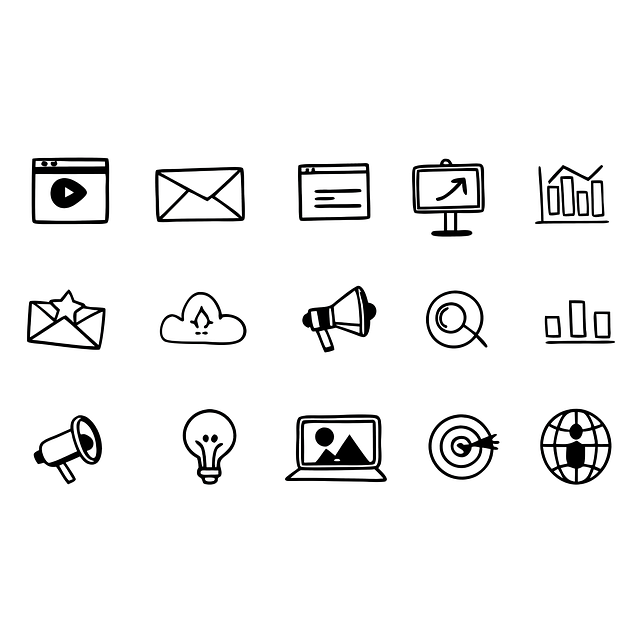UI design is essential for a website's success, transforming digital interfaces into engaging experiences that blend aesthetics and functionality. Core principles like simplicity, user-centricity, and iterative research guide design decisions, ensuring intuitive navigation and clean layouts. Information Architecture organizes content for effortless access, while prototyping and usability testing refine the user experience. Minimalism, responsive design, and accessibility trends enhance user satisfaction, driving engagement and conversion.
“Unleash the power of exceptional user experiences with a deep dive into the world of UI/UX design for websites. From understanding the visual fundamentals of UI design to exploring the latest trends, this comprehensive guide covers essential aspects. We’ll delve into key principles, emphasize the role of user research, and navigate information architecture for seamless navigation.
Through prototyping and usability testing, we’ll refine the user journey. Discover best practices that define modern web UI design, ensuring your website captivates and converts visitors.”
Understanding UI Design: The Visual Foundation

UI design forms the very foundation of any website’s success, acting as the visual bridge between a brand and its users. It involves the creative process of designing digital interfaces that not only look appealing but also function seamlessly. At its core, UI design focuses on the layout, color schemes, typography, and interactive elements to create an engaging and user-friendly experience.
The visual aspects of UI design are crucial in capturing users’ attention and conveying a brand’s identity. Designers must consider how to effectively communicate information through visuals, ensuring that every element serves a purpose. From subtle animations to intuitive navigation, these visual cues guide users, making interactions predictable and enjoyable. Ultimately, a well-designed UI not only enhances user satisfaction but also drives engagement and conversion.
Key Principles of Effective UI/UX Design

Effective UI/UX design for websites is built on a foundation of key principles that enhance user experiences and drive engagement. Firstly, simplicity reigns supreme; intuitive navigation and clean interfaces ensure users can effortlessly find what they need. Minimalist designs, with a focus on clear calls-to-action, reduce cognitive load and encourage exploration.
User-centricity is another cornerstone. Design decisions should always be guided by user needs, preferences, and behaviors. Conducting thorough user research, testing, and gathering feedback throughout the development process ensures the final product caters to its intended audience seamlessly. This iterative approach, coupled with a deep understanding of user personas, results in interfaces that feel natural and intuitive to use.
User Research and Its Role in Website Optimization

User research is a cornerstone in the process of creating optimal user experiences for websites, playing a pivotal role in shaping effective UI design strategies. By understanding the needs, behaviors, and preferences of target users, designers can make informed decisions that drive website optimization. This involves employing various research methods such as surveys, interviews, focus groups, and usability testing to gather valuable insights.
These research techniques enable designers to identify user pain points, define user personas, and map out user journeys, ensuring that the website’s structure, navigation, and content align with user expectations. Integrating user research into UI design iterates and refines the website, resulting in enhanced usability, increased engagement, and improved conversion rates.
Information Architecture: Organizing Content for Seamless Navigation

In the realm of UI/UX design, Information Architecture (IA) stands as a cornerstone, meticulously organizing content for seamless navigation across websites. A well-structured IA ensures users can effortlessly find relevant information, enhancing their overall experience. It involves careful planning and classification of web pages, menus, and content to create a logical flow that mirrors the user’s mental model.
Effective IA leverages user research and analytics to understand how visitors interact with a site. By grouping related content together and establishing clear hierarchy, it allows users to navigate intuitively. This strategic organization not only benefits users but also search engines, as structured data aids in indexing and improves website discoverability. In essence, a robust Information Architecture is key to crafting user-friendly interfaces that foster engagement and satisfaction.
Prototyping and Usability Testing: Refining the User Experience

Prototyping and usability testing are essential steps in refining a website’s user experience, or UX. During prototyping, designers create interactive models of the desired UI, allowing for early exploration and iteration. This process enables stakeholders to visualize how users will interact with different elements on the page, facilitating informed design decisions. By identifying potential issues and gathering feedback at this stage, designers can address usability concerns before development begins, ensuring a smoother transition to the implementation phase.
Usability testing involves inviting target users to interact with the prototype, providing valuable insights into their experience. Observing how users navigate the interface, complete tasks, and provide qualitative feedback helps identify pain points and areas for improvement. This iterative process ensures that the final UI design meets user needs, enhances usability, and provides an optimal experience, ultimately contributing to higher user satisfaction and engagement on the website.
Trends and Best Practices in Modern Web UI Design

In modern web UI design, trends and best practices continue to evolve, driven by advancements in technology and changing user expectations. One prominent trend is the adoption of minimalism, characterized by clean layouts, simple typography, and a focus on visual clarity. This approach not only enhances user experience but also improves site speed and accessibility. Another notable shift is towards responsive design, ensuring that websites seamlessly adapt to various screen sizes and devices, providing a consistent experience regardless of whether users are on desktops, tablets, or smartphones.
Interactive elements and animations play a significant role in enhancing UI design, adding micro-interactions that provide feedback and create engaging user journeys. Material Design from Google and Human Interface Guidelines from Apple continue to influence best practices, offering design systems and visual language principles that promote consistency and usability. Additionally, accessibility has become a cornerstone of modern web UI design, with a focus on inclusive design practices to ensure all users can navigate and interact with websites effectively.
